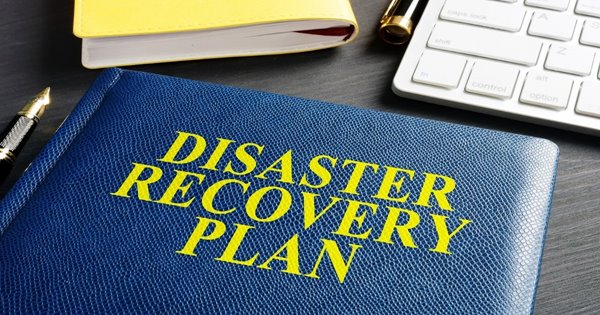Summary: Disaster recovery resources such as emergency preparedness plans and business continuity plans are essential for a business to recover after a disaster. This article teaches how to prepare and implement critical business recovery plans during a natural or man-made disaster. 
Disasters are, by definition, serious disruptions that can cause significant damage. In addition to the immediate danger, disasters may also cause long-term threats to your business, operations, finances, and reputation. So it’s essential to develop a disaster recovery toolbox that contains procedures to prepare, respond, and recover from disasters.
Assess Your Potential Risks
Your business likely faces many
potential risk exposures. Identifying these dangers is the first step in preparing for them. Some threats will depend on your location and may be seasonal, while other risks could strike anytime. When identifying potential hazards, consider human, environmental, natural, and technological disasters, including:
- Severe storms
- Flooding
- Wind
- Fire
- Earthquake
- Extreme heat
- Winter weather
- Pandemics
- Hazardous material spills
- Civil unrest
- Terrorism
- Workplace violence
- Power outages
- Equipment Failure
- Cyberattacks and ransomware

Conduct a Business Impact Analysis
A
Business Impact Analysis can help you identify the potential losses so you can make appropriate plans. This list includes scenarios that may impact your business.
- Damaged property and inaccessible worksites
- Equipment, supplies, and inventory may be damaged or destroyed
- Additional costs to Repair and replace property, equipment, supplies, and inventory
- Staffing or personnel shortage
- Increased labor costs
- Business disruptions
- Regulatory fines
- Contracts may be breached
- Reputational damage
Construct a Business Continuity Plan
Business interruption caused by disasters can have a profoundly negative impact on operations and finances. However, implementing a
business continuity plan can limit that impact. The plan should address the following issues:
- Which business operations must be prioritized?
- How long can essential operations be delayed before negative impacts occur?
- What contractual, regulatory, or reputational impacts may occur because of the business interruption?
- Can business operations be performed at another location if needed?
- What resources will be needed for business operations, including equipment, data, and supplies?
Write an Emergency Preparedness Plan
A good
emergency preparedness plan can reduce the damage that could occur.
- Strengthen your building against natural disasters, including storms, winter weather, and fire
- Have the building inspected before and after storm season and carry out repairs and improvements as needed
- Keep the roof and gutters free of debris, and keep any trees around the building trimmed
- Create a checklist of tasks that should be completed when a wildfire, hurricane, or other severe storm threatens
- Stock the building with emergency supplies
- Have an evacuation plan in place
- Run emergency drills and practice your plan
- Review and update your plan periodically
Prepare Your Crisis Communication Plan
A
crisis communication plan ensures timely and accurate information is given to all employees, the media, customers, suppliers, vendors, and the public.
- Appoint a communication coordinator.
- Keep current contact information for all employees.
- Give employees an emergency contact to use to receive information during a crisis.
- Decide which primary and backup communication methods will be used, such as phone, text, email, online portal, website, or social media.
- Consider what other groups need to be communicated with during a crisis.
- Create templates for communications, memos, and press releases that are likely, such as a notice of closure/do not report to work.
Create a Disaster Recovery Plan
After a disaster, the recovery process begins.
- Maintain a list of plumbers, electricians, and other professionals who may be needed after a disaster. Check references, insurance coverage, and licensing.
- Prioritize business operations to determine which operations must resume first.
- Determine which workers will need to return first.
- Do not allow workers back into the building until it has been cleared for safety.
Know Your IT Disaster Recovery Plan
After a natural disaster, computer failure, or cyberattack, a loss of information technology can cause significant business interruption. Thus, it is important to create an
IT disaster recovery plan, by considering the following questions:
- How would IT failures impact business operations and finances?
- What amount of downtime, if any, is acceptable?
- How can hardware be protected during a hurricane, fire, or other natural disasters?
- What cybersecurity measures are in place to prevent cyberattacks?
- What backup power sources, if any, are available?
- If data is lost, how can it be restored?
- What backups are kept? How often are they updated? Are they stored digitally or at a separate location? Are the backups secure?
Review Your Business Insurance Annually
Secure insurance to protect against the exposures most likely to affect you. Coverages to consider include
property and business interruption insurance, flood and earthquake insurance,
cyber liability insurance, boiler and machinery coverage, and workplace violence coverage.

Loss Control Resources from AmTrust
AmTrust's
Loss Control Department provides
commercial property safety resources and risk management solutions designed to keep your business and your employees safe and prepared during a disaster. For more information about our loss control services,
contact us today.
This material is for informational purposes only and is not legal or business advice. Neither AmTrust Financial Services, Inc. nor any of its subsidiaries or affiliates represents or warrants that the information contained herein is appropriate or suitable for any specific business or legal purpose. Readers seeking resolution of specific questions should consult their business and/or legal advisors. Coverages may vary by location. Contact your local RSM for more information.